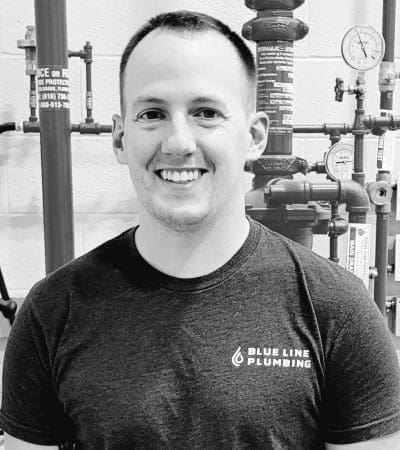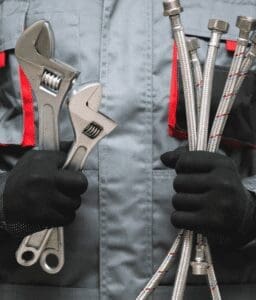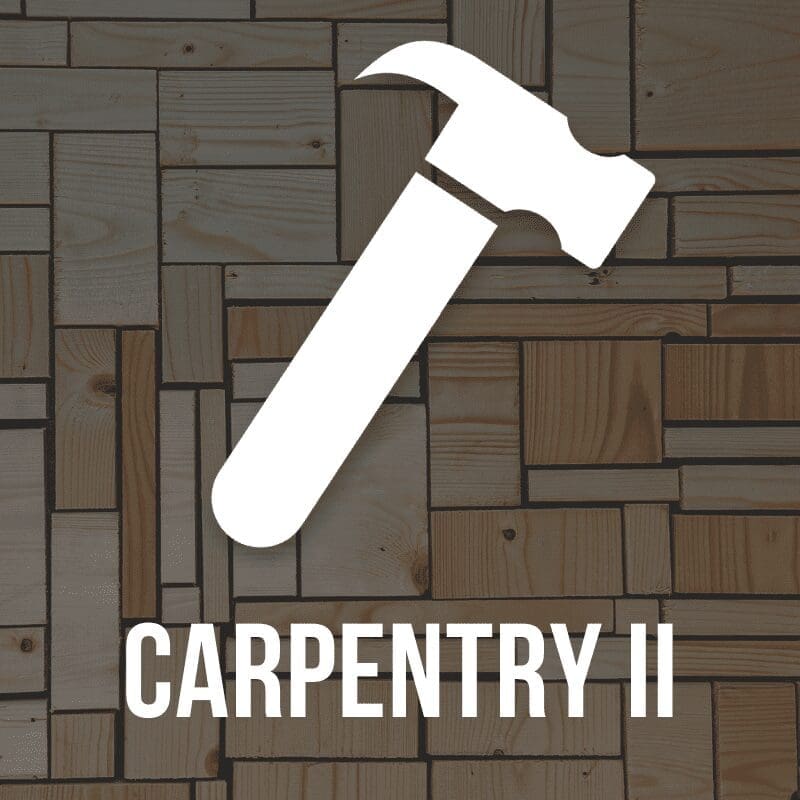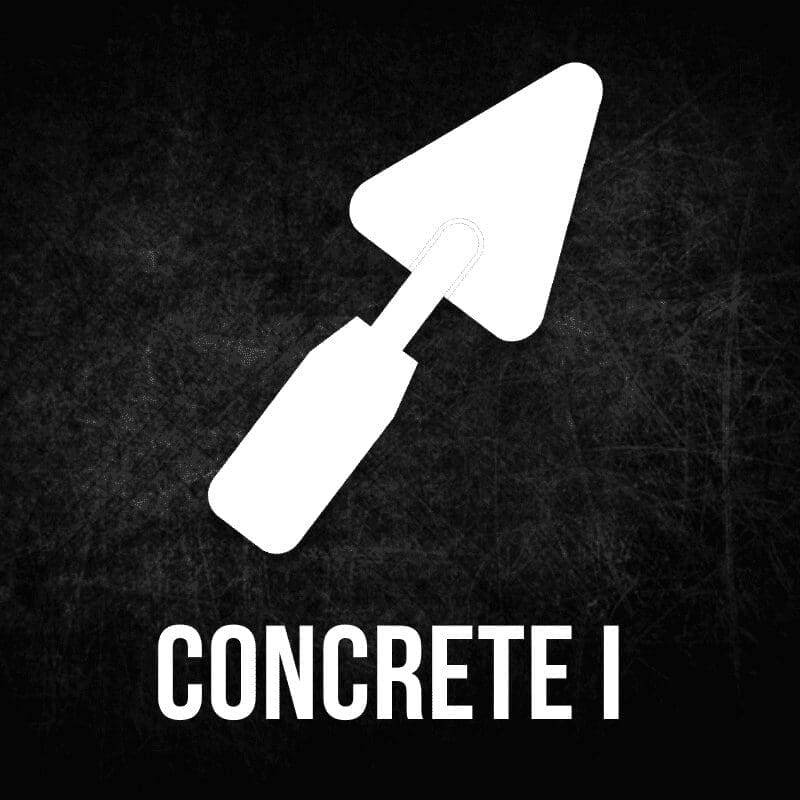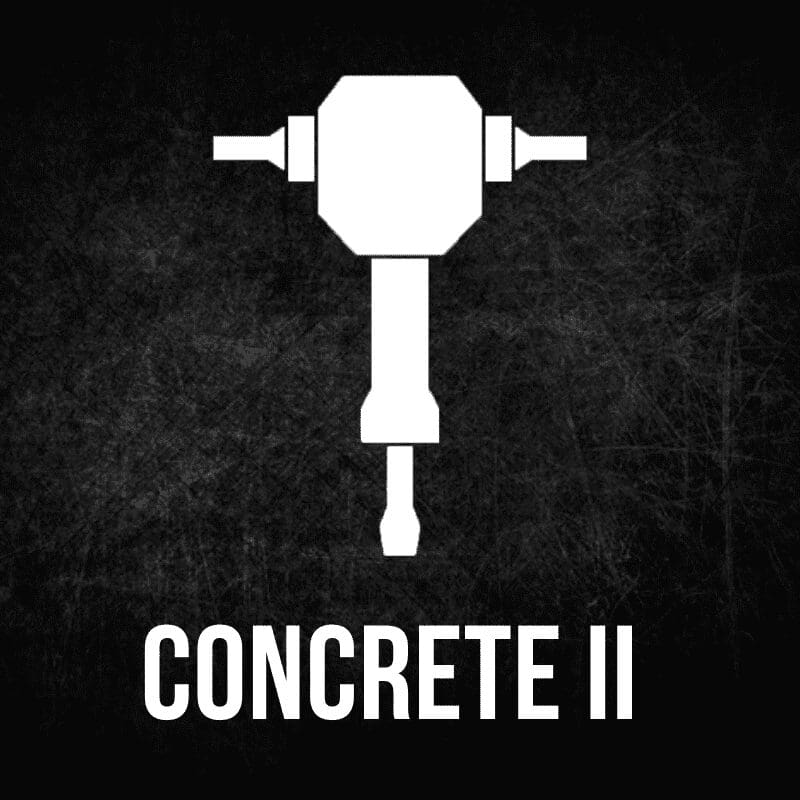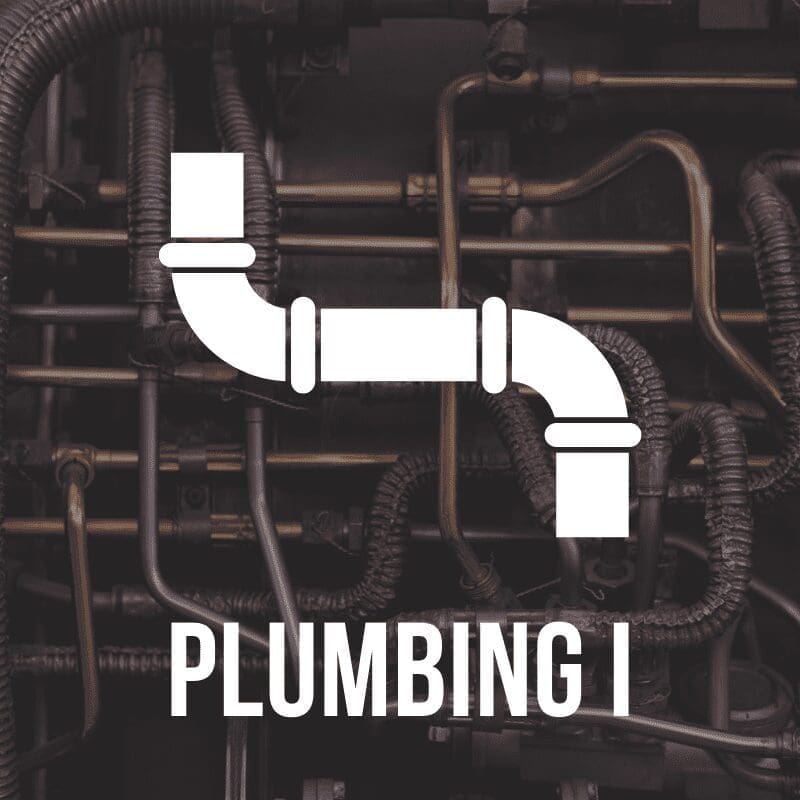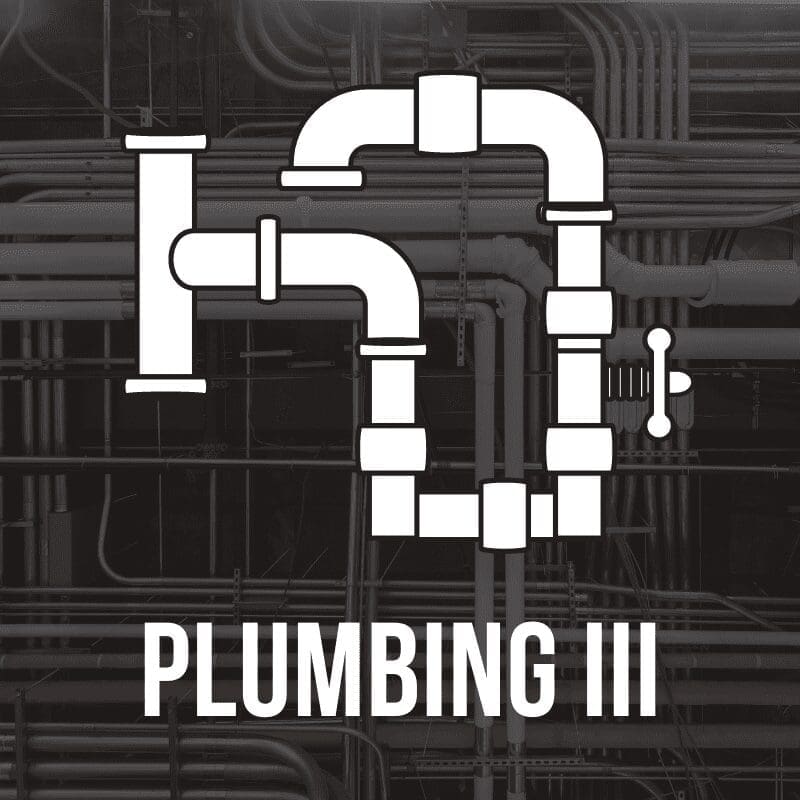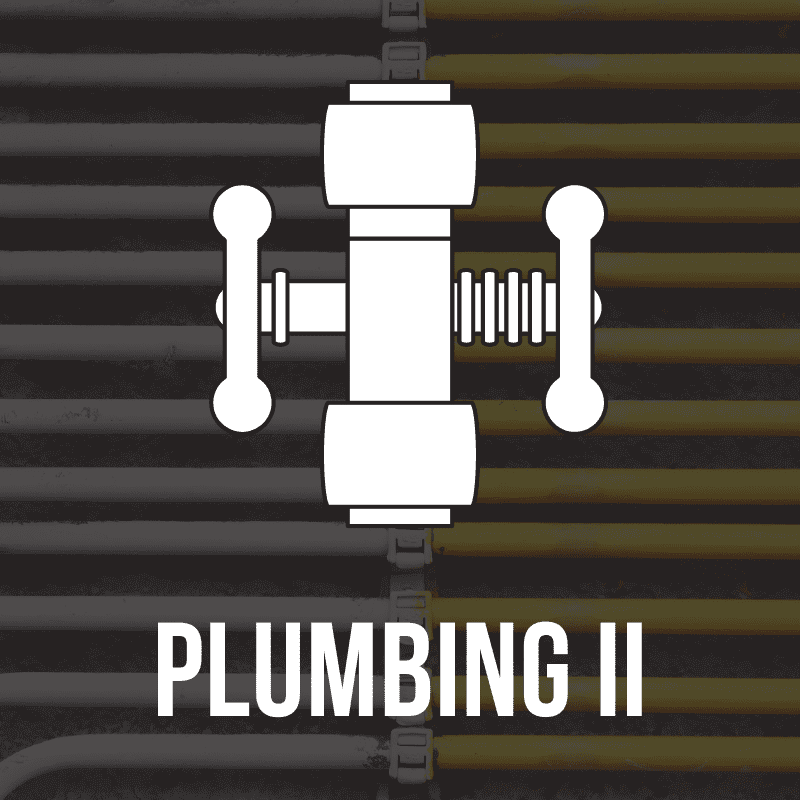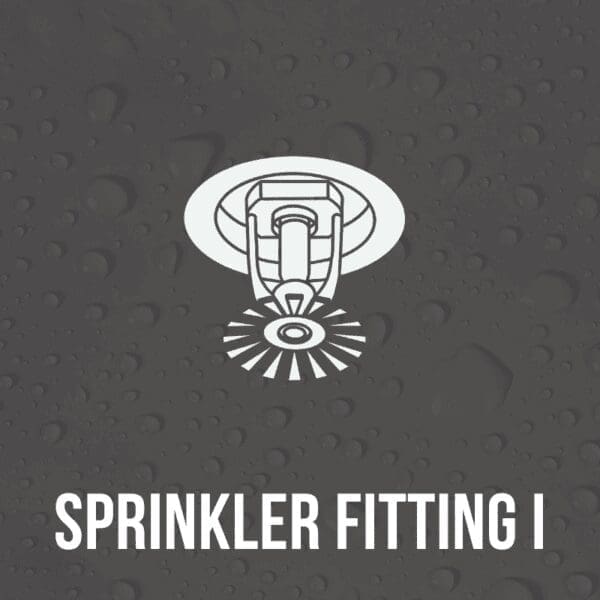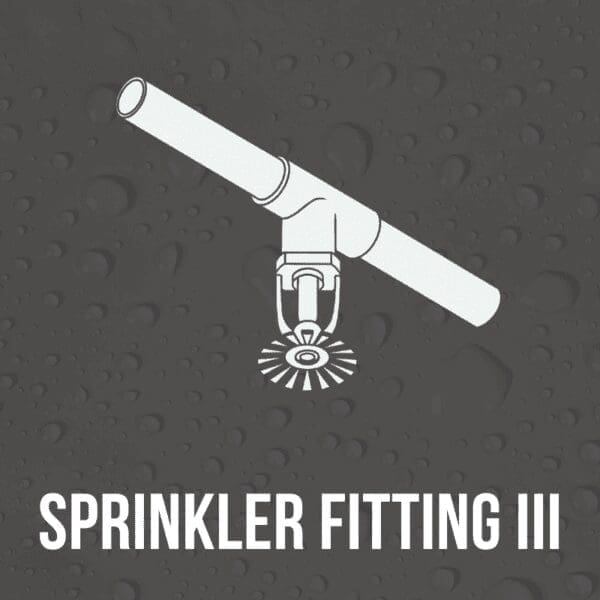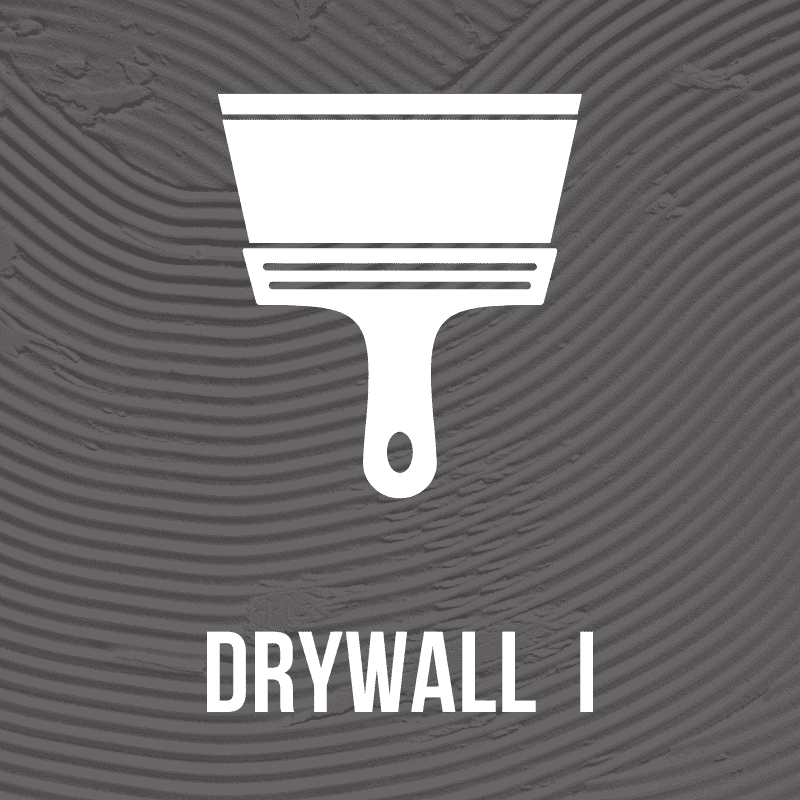Plumbing I
In WMCI’s introductory plumbing training program students will learn the basics of how to launch a successful commercial plumbing career. Furthermore, students in Plumbing I will also receive their CORE: Foundational Construction Skills certification; an NCCER certified program that covers the foundational skills of the construction industry.
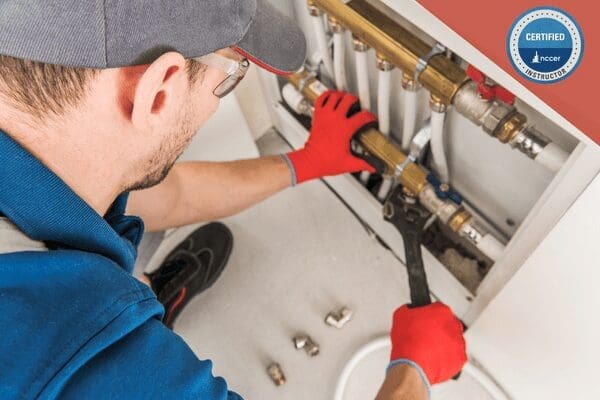

Course Description
This course covers the concepts technicians need to safely install, test, maintain, and repair different types of pipe systems for residential, commercial, and public buildings. It also covers math, drawings, code, and other critical skills that ensure learners are set up for job success.
Note: this course fulfills educational purposes only. Classroom hours do not count towards the 6,000 hours as a registered plumbing apprentice in the practical installation of plumbing under the supervision of a licensed master plumber required to sit for the Michigan Journey Plumber exam.
Course Details
- Dates: August 19, 2024 - June 2, 2025
- Day of the Week: Every Monday
- Time: 4:30 - 8:30PM
- Tuition: $4,000 ($2,000 per semester)
- Material/Lab Fees: $155
- Course Textbook Fee: $180
Credentials Earned
- NCCER CORE:Certification
- NCCER Plumbing I Certification
- WMCI Certificate of Completion
Plumbing I Training Curriculum
Fall Semester
Basic Safety
Work at construction and industrial job sites can be hazardous. Most job-site incidents are caused by at-risk behavior, poor planning, lack of training, or failure to recognize the hazards. To help prevent incidents, every company must have a proactive safety program. Safety must be incorporated into all phases of the job and involve employees at every level, including management.
Introduction to Construction Math
Craft professionals rely on math to do their jobs accurately and efficiently. Plumbers calculate pipe lengths, plan drain slopes, and interpret dimensioned plans. Carpenters meet code requirements by using math to frame walls and ceilings properly. HVAC professionals develop ductwork and calculate airflow with practical geometry. Whichever craft lies in your future, math will play a role in it. This module reviews the math that you will need and sharpens the skills that you will be using in the exciting modules ahead.
Introduction to Hand Tools
Every profession has its tools. A surgeon uses a scalpel, an instructor uses a whiteboard, and an accountant uses a calculator. The construction crafts require a broad array of hand tools. Even if you are familiar with some of the tools, all craftworkers need to learn how to select, maintain, and use them safely. A quality hand tool may cost more up front, but if it is properly used and maintained, it will last for years. A true craft professional invests wisely in hand tools, and uses, maintains, and stores them with the same wisdom.
Introduction to Power Tools
Power tools play an important role in the construction industry. Thousands of construction workers across the world use power tools every day to make holes, cut different types of materials, smooth rough surfaces, and shape a variety of products. Regardless of their specialization, all construction workers eventually use power tools on their job. This module provides an overview of the common types of power tools and how they function. It also describes the proper techniques required to ensure their safe and efficient operation.
Introduction to Construction Drawings
Various types of construction drawings are used to represent actual components of a building project. The drawings provide specific information about the locations of the parts of a structure, the types of materials to be used, and the correct layout of the building. Knowing the purposes of the different types of drawings and interpreting the drawings correctly are important skills for anyone who works in the construction trades. This module introduces common types of construction drawings, their basic components, standard drawing elements, and measurement tools that are typically used when working with construction drawings.
Basic Communication Skills
The construction professional communicates constantly. The ability to communicate skillfully will help to make you a better worker and a more effective leader. This module provides guidance in listening to understand, and speaking with clarity. It explains how to use and understand written materials, and it also provides techniques and guidelines that will help you to improve your writing skills.
Basic Employability Skills
Becoming gainfully employed in the construction industry takes more preparation than simply filling out a job application. It is essential to understand how the construction industry and potential employers operate. Your trade skills are extremely important, but all employers are also looking for those who are eager to advance and demonstrate positive personal characteristics. This module discusses the skills needed to pursue employment successfully.
Introduction to Materials Handling
Lifting, stacking, transporting, and unloading materials such as brick, pipe, and various supplies are routine tasks on a job site. Whether performing these tasks manually or with the aid of specialized equipment, workers must follow basic safety guidelines to keep themselves and their co-workers safe. This module provides guidelines for using the appropriate PPE for the material being handled and using proper procedures and techniques to carry out the job.
spring semester
Introduction to the Plumbing Profession
Introduces trainees to the many career options available in today’s plumbing profession. Provides a history of plumbing and also discusses the current technology, industries, and associations that make up the modern plumbing profession. Also reviews human relations and safety skills
Plumbing Safety
Discusses the causes of accidents and their consequences and repercussions in terms of delays, increased expenses, injury, and loss of life. Reviews the types and proper use of personal protective equipment (PPE). Instructs trainees in the use of critical safety information conveyed in hazard communication (HazCom), safety signs, signals, lockout/tagout, and emergency response. Covers confined-space safety, and reviews safety issues related to hand and power tools.
Tools of the Plumbing Trade
Instructs trainees in the care and use of the different types of hand and power tools they will use on
the job. Gives trainees the information they need to select the appropriate tools for different tasks, and reviews tool maintenance and safety issues.
Introduction to Plumbing Math
Reviews basic math concepts, such as whole numbers, fractions, decimals, and squares, and demonstrates how they apply to on-the-job situations. Teaches trainees how to measure pipe using fitting tables and framing squares and how to calculate 45-degree offsets
Introduction to Plumbing Drawings
Introduces trainees to the different types of plumbing drawings they will encounter on the job and discusses how to interpret and apply them when laying out and installing plumbing systems. Discusses the symbols used in plumbing and mechanical drawings and reviews isometric, oblique, orthographic, as well as schematic drawings. Requires trainees to render plumbing drawings and to recognize how code requirements apply to plumbing drawings
Plastic Pipe and Fittings
Introduces trainees to the different types of plastic pipe and fittings used in plumbing applications, including ABS, PVC, CPVC, PE, PEX, and PB. Describes how to measure, cut, join, and support plastic pipe according to manufacturer’s instructions and applicable codes. Also discusses pressure testing of plastic pipe once installed.
Copper Tube and Fittings
Discusses sizing, labeling, and applications of copper tube and fittings and reviews the types of valves that can be used on copper tube systems. Explains proper methods for cutting, joining, and installing copper tube. Also addresses insulation, pressure testing, seismic codes, and handling and
storage requirements.
Cast-Iron Pipe and Fittings
Introduces trainees to hub-and-spigot and no-hubcast-iron pipe and fittings and their applications in DWV systems. Reviews material properties, storage and handling requirements, and fittings and valves. Covers joining methods, installation, and testing.
Steel Pipe and Fittings
Discusses threading, labeling, and sizing of steel pipe and reviews the differences between domestic and imported pipe. Covers the proper techniques for measuring, cutting, threading, joining, and hanging steel pipe. Also reviews corrugated stainless steel tubing.
Introduction to Plumbing Fixtures
Discusses the proper applications of code-approved fixtures in plumbing installations. Reviews the different types of fixtures and the materials used in them. Also covers storage, handling, and code requirements.
Introduction to Drain, Waste, and Vent (DWV) Systems
Explains how DWV systems remove waste safely and effectively. Discusses how system components, such as pipe, drains, traps, and vents work. Reviews drain and vent sizing, grade, and waste treatment. Also discusses how building sewers and sewer drains connect the DWV system to the public sewer system.
Introduction to Water Distribution Systems
Identifies the major components of water distribution systems and describes their functions. Reviews water sources and treatment methods and covers supply and distribution for the different types of systems that trainees will install on the job.
plumbing I registration form
Interested in learning more about a commercial plumbing career?
Click the button below for information on the pay, skills, projects, and common myths of commercial plumbing:


